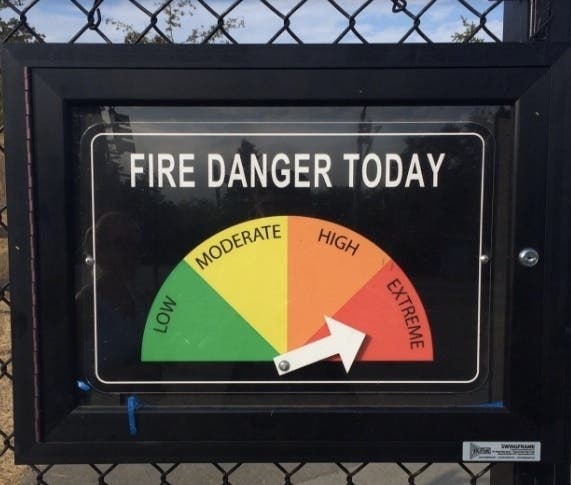SONOMA COUNTY, CA — Cooler temperatures, higher humidity and the growing chance of rain have prompted officials to lift debris burn permit suspensions in both Marin and Sonoma counties, allowing residents to resume burning under specific conditions.
The Marin County Fire Department announced Monday that those with valid agricultural and residential burn permits may now burn on permissible burn days.
In Sonoma County, Cal Fire formally canceled its local burn suspension, allowing burning for those holding current and valid permits. A permit is required to burn in both counties.
Fire officials said the reduced wildfire danger marks the end of peak fire season, but urged residents to use caution, follow all safety guidelines and maintain control of their fires at all times. Individuals can be held liable if a burn escapes their control and spreads to a neighboring property.
In Sonoma County, agricultural burns must be inspected by Cal Fire until the end of the fire season. Inspections may also be required for other types of burns and can be verified by contacting the local air quality district.
Residents must confirm that it is a permissive burn day before burning. The Bay Area Air Quality Management District can be reached at (877) 466-2876 for southern Sonoma County, while the Northern Sonoma County Air Pollution Control District can be contacted at (707) 565-2876.
In Marin County, open burn fees may apply, and residents must complete an LE-5 California Inter-Agency Burn Permit, which must be signed by Marin County Fire before burning.
Both agencies reminded residents that only dry, natural vegetation such as leaves, pine needles and tree trimmings may be burned. Burning trash, painted wood or debris is not allowed, and burns should not take place on windy days. Piles must be no larger than 4 feet in diameter and height, with a 10-foot clearance down to bare soil.
A shovel and water source should also be kept nearby, and an adult must attend the fire at all times.Fire officials emphasized that safe residential pile burning of dry vegetation remains an important tool in reducing fire hazards.
State, federal and local agencies will also take advantage of this window to conduct prescribed burns aimed at improving forest health and resilience on both public and private lands.
Copyright © 2025 Bay City News, Inc.

